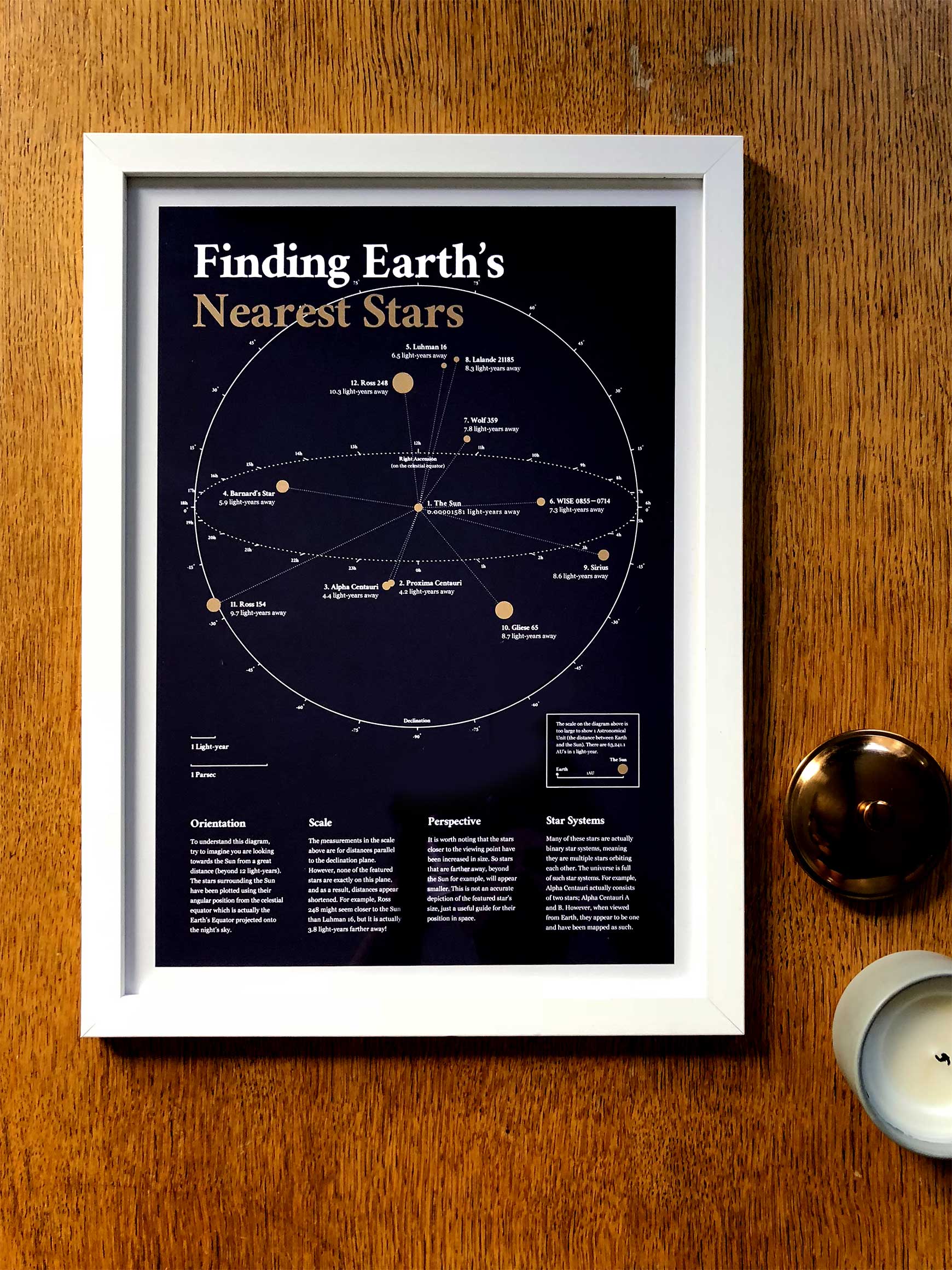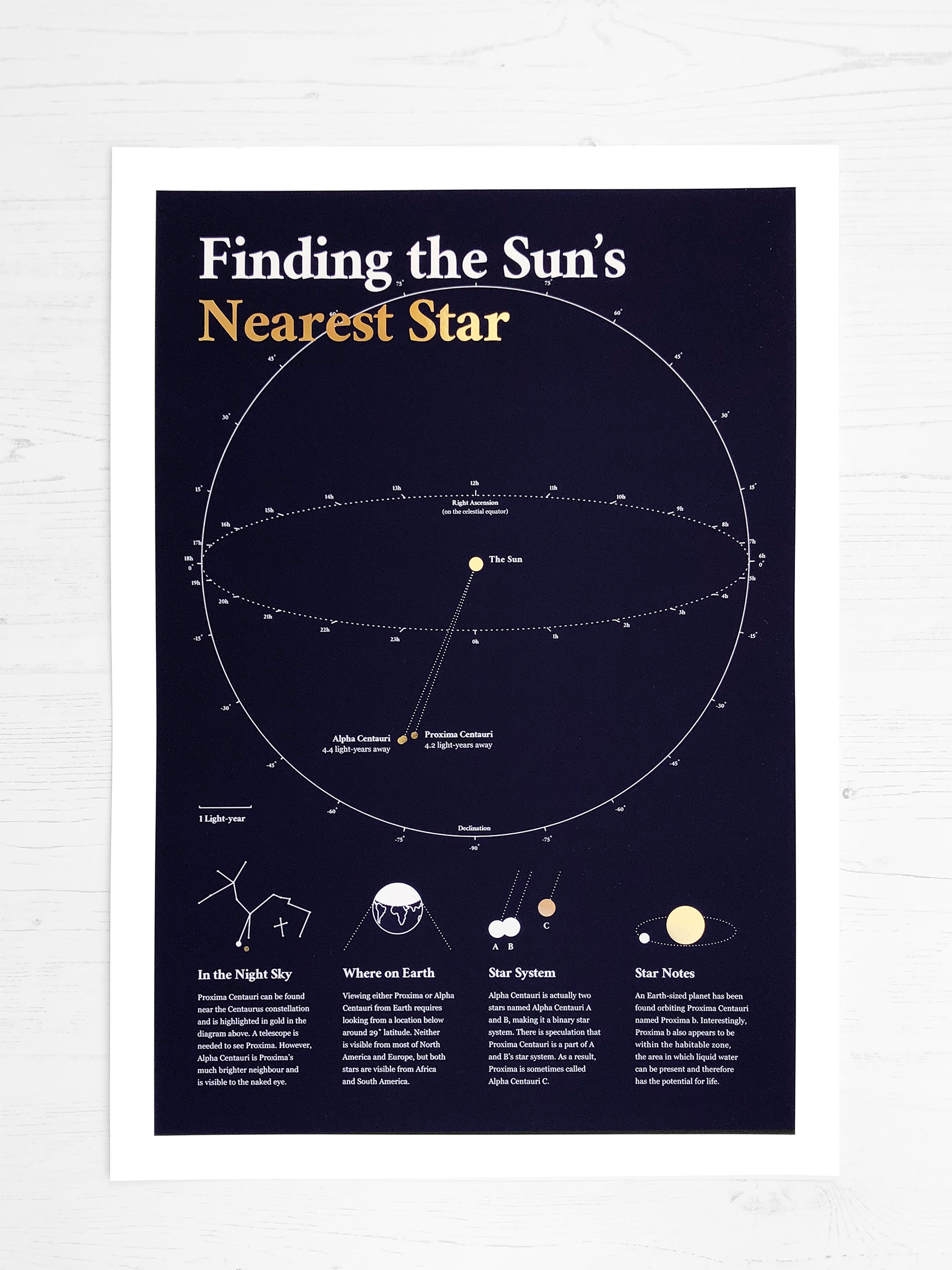Finding Earth's Nearest Stars
Below is a map of the 12 nearest stars to Earth in our galaxy followed by a few points of explanation including a list of the stars featured in the map. You can also buy this map as a print for inspiration at home or work.
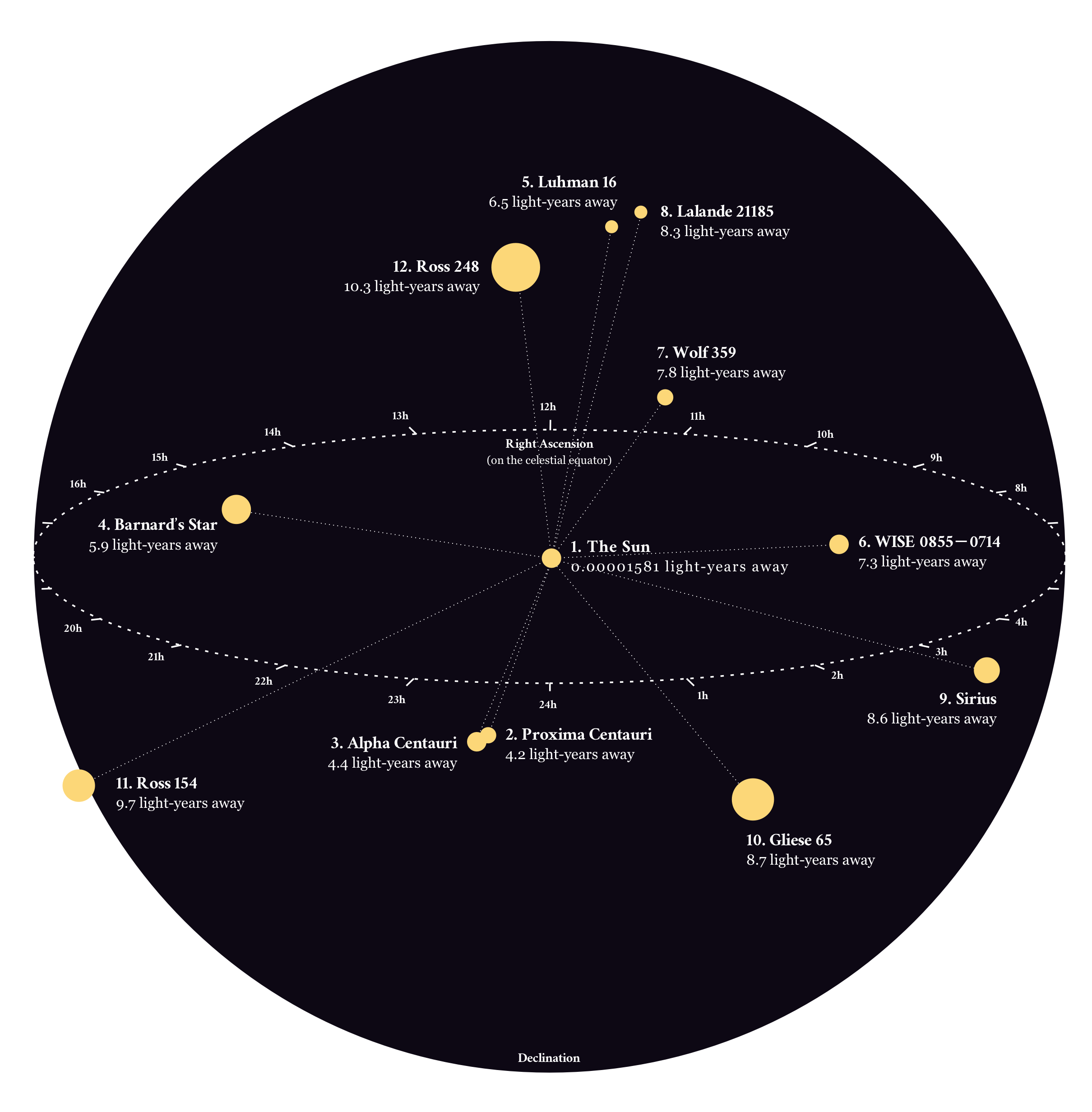
Map Explained

Where is Earth?
Earth isn't visible in the diagram above because the scale is too large to show 1 Astronomical Unit (the distance between Earth and the Sun). There are 63,241.1 AU’s in 1 light-year which means that the Earth is actually hidden well within the yellow circle used to symbolise the Sun.
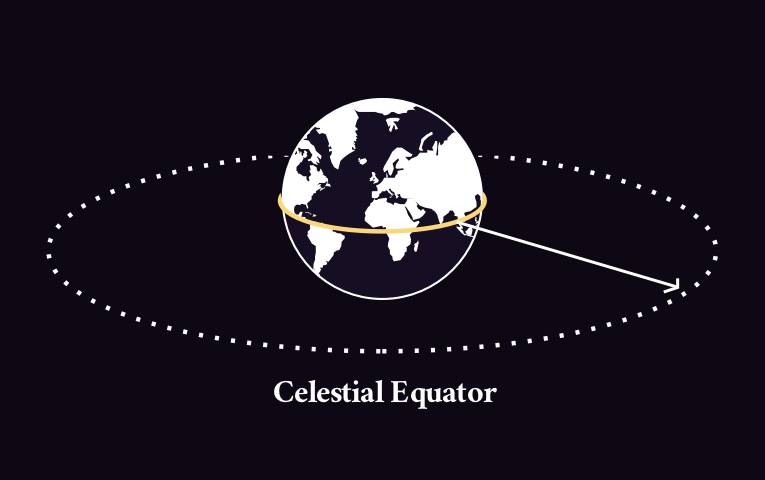
Orientation
To understand this diagram, try to imagine you are looking towards the Sun from a great distance (beyond 12 light-years). The stars surrounding the Sun have been plotted using their angular position from the celestial equator which is actually the Earth’s Equator projected onto the night’s sky.

Scale
The measurements in the scale above are for distances parallel to the declination plane. However, none of the featured stars are exactly on this plane, and as a result, distances appear shortened. For example, Ross 248 might seem closer to the Sun than Luhman 16, but it is actually 3.8 light-years farther away!

Perspective
It is worth noting that the stars closer to the viewing point have been increased in size. So stars that are farther away, beyond the Sun for example, will appear smaller. This is not an accurate depiction of the featured star’s size, just a useful guide for their position in space.
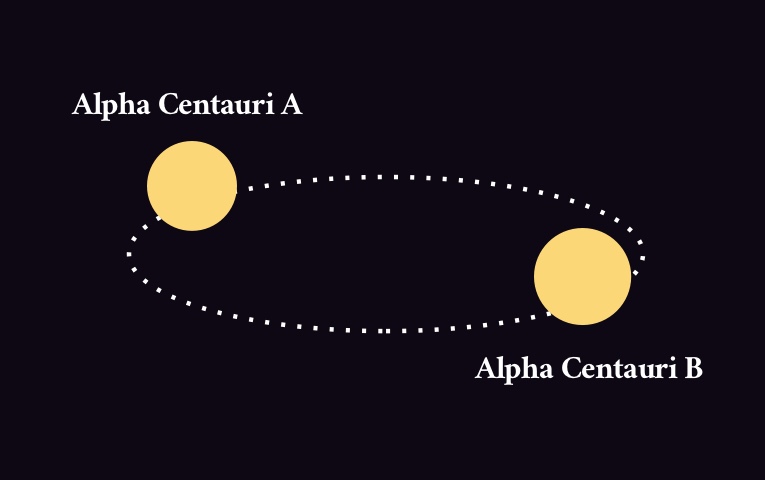
Star Systems
Many of these stars are actually binary star systems, meaning they are multiple stars orbiting each other. The universe is full of such star systems. For example, Alpha Centauri actually consists of two stars; Alpha Centauri A and B. However, when viewed from Earth, they appear to be one and have been mapped as such.
Star List
1. The Sun
0.00001581 light-years away (or 1AU)
2. Proxima Centauri
4.2 light-years away
3. Alpha Centauri
4.4 light-years away
4. Barnard’s Star
5.9 light-years away
5. Luhman 16
6.5 light-years away
6. WISE 0855−0714
7.3 light-years away
7. Wolf 359
7.8 light-years away
8. Lalande 21185
8.3 light-years away
9. Sirius
8.6 light-years away
10. Gliese 65
8.7 light-years away
11. Ross 154
9.7 light-years away
12. Ross 248
10.3 light-years away
